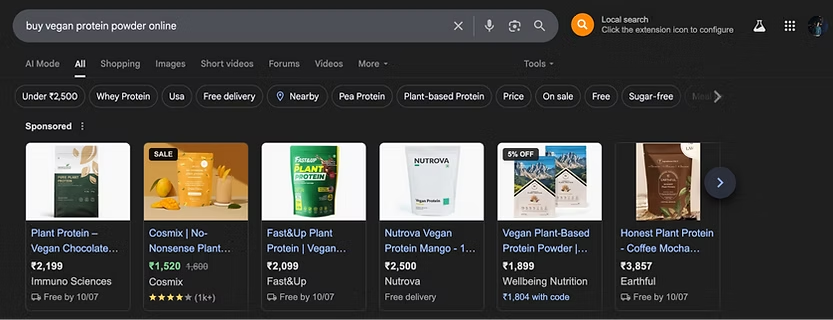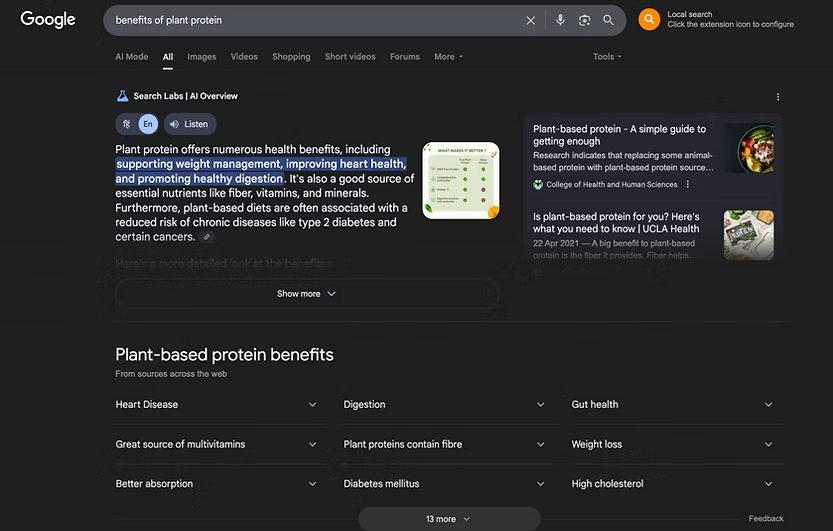
When it comes to driving sales, not all traffic is equal. The key is always the traffic intent. It’s one thing to get people to your site, but another to attract visitors who are actually ready to buy. That’s where high-intent keywords come in. They connect you with prospects who already know what they want, making it far easier to convert them into customers.
Surprisingly, many businesses get this wrong. They focus on chasing high-volume keywords without considering whether those searches are tied to genuine purchase intent. The result? Plenty of clicks, but very few sales.
In this guide, we’ll explore how you can identify high-intent keywords and maximize your conversions with Graas, a platform that makes this process smarter and simpler.
Let’s dive right in.
Understanding High-Intent Keywords
How High-Intent Keywords Improve Conversions
High-intent keywords are search terms that clearly signal a user’s readiness to take a commercial action, whether that’s making a purchase, requesting a quote, or starting a free trial.
These keywords are positioned at the bottom of the marketing funnel. They capture transactional or commercial intent, which means the user is actively evaluating solutions or is prepared to buy right now.
Unlike informational keywords (which aim to satisfy curiosity or educate), high-intent keywords typically include modifiers such as “buy,” “order,” “discount,” “near me,” “free shipping,” or specific product names and models. They reflect urgency and a clear direction toward conversion.
Example:
It’s not that low-intent keywords are useless; they’re essential for brand awareness and nurturing prospects higher up in the funnel. But if your goal is immediate revenue, high-intent keywords are where the money is.
High-intent keywords play a starring role across all your acquisition channels:
High-intent keywords align your marketing efforts with users who are in a buying mindset, not just browsing. That’s why mastering them and letting tools like Graas pinpoint these opportunities is crucial for increasing conversions and revenue.
Focusing on high-intent keywords can be an uplift for your marketing ROI. Here’s how they directly improve conversions and campaign performance:
High-intent keywords zero in on people who are actively looking to purchase. When someone types “buy vegan protein powder online” into Google, they’re much closer to pulling out their wallet than someone searching “benefits of plant protein.”
For high-intent keywords, the SERP directly displays product listings.

However, for keywords with low intent, the SERP displays blogs and landing pages.

By targeting transactional queries, you attract visitors who are primed to convert, shortening your sales cycle and increasing immediate revenue.
If your ads show up for generic or purely informational searches, you might pay for plenty of clicks that never turn into sales. High-intent keywords ensure your budget goes toward users with serious purchase intent. This means fewer wasted clicks, lower customer acquisition and costs.
Because high-intent keywords align so closely with what buyers are actively searching for, they naturally improve your click-through rates (CTR). More relevant ads get more clicks. Pair that with higher conversion rates, and you’ll see your return on ad spend (ROAS) climb.
Whether it’s paid search, social campaigns, or even organic listings, prioritizing high-intent terms sharpens every part of your funnel, leading to more sales with less effort.
So, how do you actually identify and use high-intent keywords to boost conversions? Here’s a roadmap.
Start with trusted tools like Google Keyword Planner, SEMrush, or Ahrefs to explore search volume, competition, and CPC. Look beyond raw traffic, filter for keywords that show transactional language.
With Graas’s Marketing Analytics, you get even sharper insights. It breaks down each keyword’s performance by match type, traffic, clicks, impressions, and, most critically, conversion metrics, based on your own data, so you’re not guessing which keywords will deliver sales.
Long-tail keywords like “buy leather office chair online India” may have lower search volumes, but they often carry higher intent and convert at better rates. Why? They’re more specific, capturing shoppers further down the funnel.
With Graas, you can pinpoint these long-tail opportunities by filtering for keywords with high ROAS and conversion rates, even if impressions are modest.
Once identified, weave these keywords into your Google Ads, product titles, descriptions, and even meta tags. For SEO, create landing pages or blog posts directly targeting these queries.
On marketplaces, ensure your listings feature these exact terms in product titles and bullet points to show up when buyers search. The right placement makes your offer pop up exactly when purchase intent peaks.
Trends shift, new competitors emerge, and what worked last month might underperform today.
With Graas Turbocharger’s Marketing Analytics, you can track:
This data allows you to adjust bidding strategies in real time. Marketing Analytics makes it simple: sort your keywords by ROAS, conversion rate, or even by match type (broad, phrase, exact) to instantly see where your money is best spent.
High-intent keywords are the backbone of any conversion-focused marketing strategy. They connect you with customers who are ready to buy. By zeroing in on these terms, you drive higher ROI, cut wasted ad spend, and turn more clicks into actual revenue.
That’s where Graas comes in. Its real strength isn’t just collecting keyword data, it’s helping you act on it. It helps you:
Ready to improve your campaigns with data-driven keyword insights?